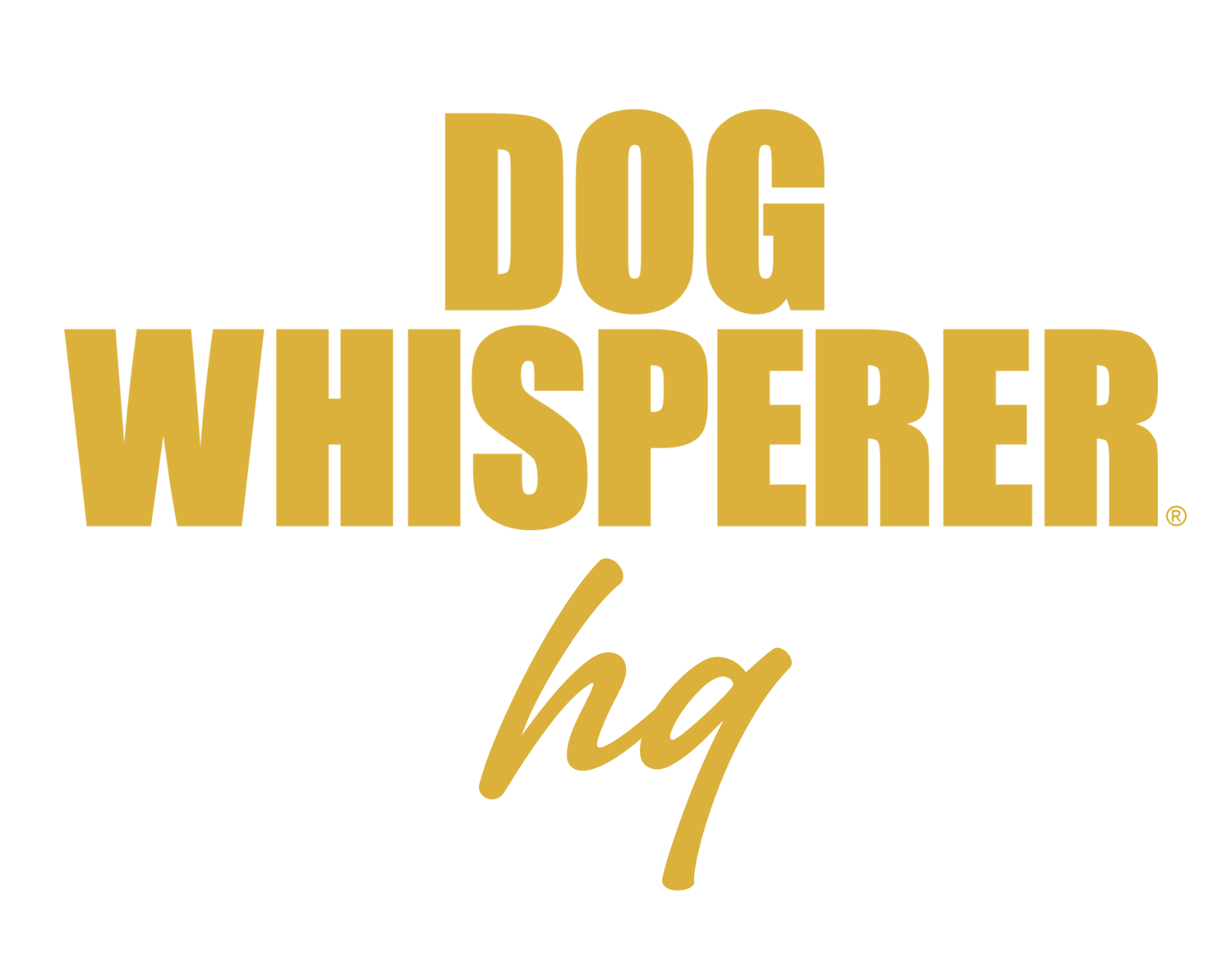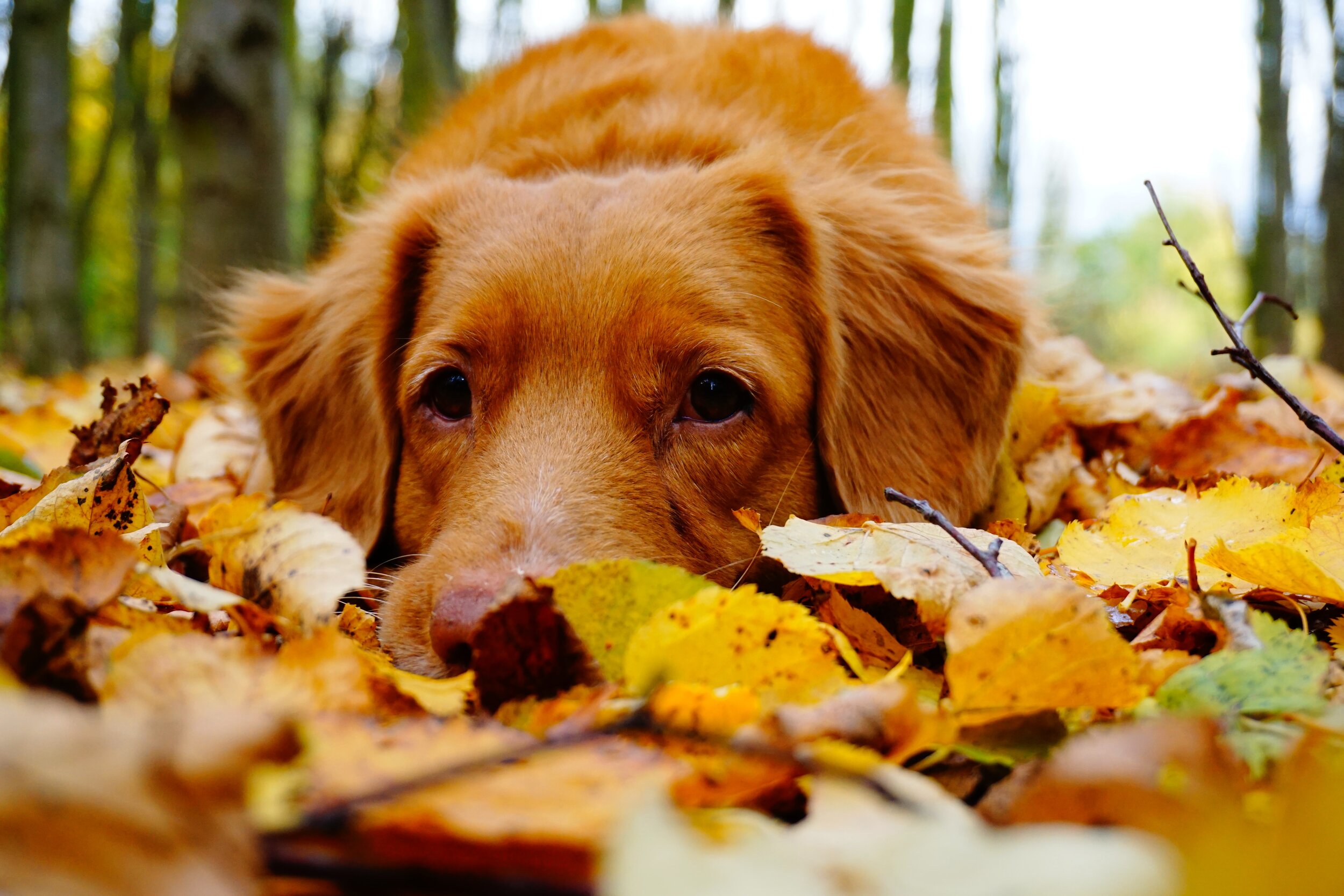This Fall, Here’s How To Keep Your Dog From Eating Leaves
By Kaitlyn Arford
A gorgeous autumn walk through fall colors of brown, orange and red with your favorite four-legged friend by your side sounds like a relaxing way to spend the afternoon. But your dog may be interested in the fall foliage for a different reason: they see fallen leaves as something to munch and crunch. Consuming leaves isn’t that dangerous — but it’s still a behavior to curb whether your dog is snatching an occasional stray leaf or consuming part of a leaf pile.
Why Dogs Eat Leaves
So why do dogs even like to crunch and munch on leaves when they have kibble and treats at home? Interestingly enough, some dogs struggle with a habit of eating leaves because of a medical condition called pica, which is when dogs consume inedible objects like rocks or toilet paper. Dogs can develop pica because of underlying health conditions.
Another reason why your dog’s enjoying leaves? Boredom. Curious canines explore the world through their mouths and might be tempted by leaves because of their scent, color or taste, the sight of leaves fluttering through the wind, or simply because of their proximity. It’s also possible that your dog isn’t interested in eating the leaves themselves, but is drawn to the scent or taste of littered food or liquid spilled on them. Unfortunately, many leaves are also sprayed with pesticides or fertilizers that are toxic and poisonous to dogs when ingested.
“Curious canines explore the world through their mouths and might be tempted by leaves because of their scent, color or taste, the sight of leaves fluttering through the wind, or simply because of their proximity.”
Your precious pup may also be eating leaves as they eat grass, which dogs are sometimes drawn to when they’re experiencing a nutritional deficiency. Leaves, as well as other plant material like grass, are rich in fiber. However, leaves are not nutritiously beneficial to any canine and should not be included in their diet. In fact, a dog’s stomach can become blocked when they eat a large amount of leaves, which can lead to vomiting and stomach pain.
Some veterinarians have even theorized that since dogs in the wild naturally eat plants, their domesticated counterparts do the same.
Most of the time, your dog won’t be harmed by nibbling on a fallen leaf or two. Regardless of the reason why, if your dog is suddenly eating leaves constantly, vomiting, experiencing diarrhea or showing signs of pain or stomach discomfort, talk to your veterinarian.
Keep an Eye on Your Canine Companion
Whenever you let your dog outdoors, you need to keep an eye on them to make sure they aren’t putting inedible objects in their mouths. If you catch them in the act, distract them by tossing a ball their way.
If you’re out on a walk or jog with your canine companion and they start to munch on leaves, give their leash a tug to keep them farther away from the fall foliage. Dogs can’t eat what they can’t reach.
Teach Dogs to “Leave It”
Teaching dogs to ignore fallen items — like leaves, but also dropped food, stray litter and kitchen crumbs — keeps them safe from unsafe substances and situations. This means asking dogs to listen to you instead of their impulses. Any qualified trainer can guide you on how to teach the “leave it” command.
But if you want to work with your dog on this command at home, start by using positive reinforcement to teach dogs to “take” treats with permission from your hand, rewarding them by saying “yes” as they take it. Then, you can start teaching them to “leave it” by placing a treat on the floor and having your leashed dog walk by them. Reward your dog for ignoring the treat on the ground. Gradually practicing “leave it” exercises at home, in the backyard, and on walks, will teach them to stay away from items.
“...start by using positive reinforcement to teach dogs to ‘take’ treats with permission from your hand, rewarding them by saying ‘yes’ as they take it. Then, you can start teaching them to ‘leave it’ by placing a treat on the floor and having your leashed dog walk by them.”
Increase Mental and Physical Stimulation
Your dog may be munching on leaves for one simple reason: boredom. Turns out, long naps in sunbeams, gazing at birds outside and reclining in their beds isn’t mentally stimulating for canines — many of whom were bred as working dogs to hunt, guard and track. Just like people, dogs need to use their brains. Try giving your dog a puzzle toy that makes dogs think about how to retrieve treats or serve them meals in a puzzle feeder that makes them move and think about how to get their kibble.
“Try giving your dog a puzzle toy that makes dogs think about how to retrieve treats or serve them meals in a puzzle feeder that makes them move and think about how to get their kibble.”
Additionally, adding in playtime can tire your dog out so they don’t search for something to eat. When you let your dog in the backyard, take some time to play fetch or tug of war. Teach your dog a new trick or two — in addition to exhausting your dog’s energy, it’ll help you bond with your favorite four-legged friend.
Kaitlyn Arford is an award-winning freelance journalist whose work has appeared in the American Kennel Club, Betterpet and Cuteness. As a lifelong pet lover, she is passionate about educating dog owners. Learn more at kaitlynarford.com.


